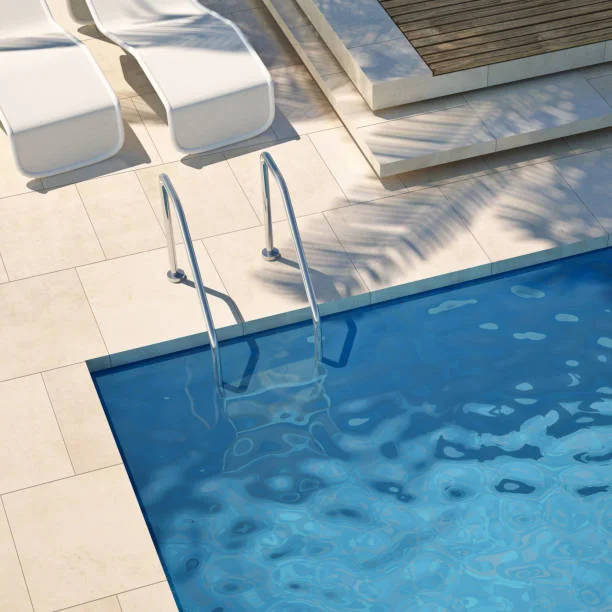Maintaining a swimming pool requires regular attention to guarantee optimal functionality, cleanliness and safety. Although some tasks are manageable with basic tools and knowledge, certain signs indicate the need for professional intervention. Recognizing these indicators early can prevent minor issues from escalating into costly repairs or health hazards. For expert assistance in the Phoenix and Scottsdale areas, click for details here for more information.
Persistent Water Clarity Issues
A pool’s water clarity is a primary indicator of its overall health; persistent cloudiness, discoloration or murkiness despite routine cleaning and chemical adjustments often signals an underlying problem. These issues can arise from malfunctioning filtration systems, imbalanced water chemistry or the presence of microscopic contaminants. Professional technicians possess the expertise and equipment to diagnose and resolve these challenges efficiently.
Frequent Algae Growth
Algae growth can be more than an aesthetic nuisance; it may point to serious imbalances in a pool’s ecosystem. Regular outbreaks, even after thorough cleaning and chemical treatments, suggest improper sanitizer levels, inadequate circulation or malfunctioning equipment. Professionals can pinpoint the root cause and apply targeted treatments to prevent recurring infestations.
Inefficient or Malfunctioning Equipment
The smooth operation of a pool depends on its filtration, heating and circulation systems. Signs of inefficiency, such as reduced water flow, unusual noises or sudden spikes in energy consumption often indicate mechanical issues. Here, pumps, filters and heaters require specialized knowledge for repair and maintenance, making professional services essential to address these concerns effectively.
Rapid Chemical Imbalance
Maintaining balanced water chemistry is critical to provide safety and comfort. A pool with fluctuating pH levels, excessive chlorine demand or other irregularities may require professional evaluation. Frequent chemical imbalances can damage pool surfaces, irritate swimmers and create an environment conducive to bacteria and algae growth. Technicians can test and recalibrate the water using advanced tools and techniques, restoring equilibrium.
Structural Damage
Cracks, leaks or other structural damage can compromise the integrity of a pool. Such issues often manifest as unexpected water loss, visible cracks in tiles or concrete or wet spots around the pool area. Identifying the source of leaks or assessing structural weaknesses requires specialized expertise and equipment. Here, professional intervention can address these problems comprehensively, preserving the pool’s functionality and value.
Persistent Stains
Stains on pool surfaces can result from mineral deposits, organic matter or chemical reactions. When routine scrubbing and cleaning fail to remove discoloration, it may signal deeper issues such as hard water deposits or metal contamination. Pool professionals can identify the cause of staining and recommend appropriate treatments, including specialized cleaning methods or chemical adjustments.
Increased Energy Consumption
A sudden increase in energy consumption associated with pool equipment often indicates underlying inefficiencies; faulty pumps, clogged filters or worn-out components can force equipment to work harder, leading to higher energy bills. Professional technicians can inspect and optimize equipment to secure energy-efficient operation, reducing costs over time.
Strong Odors or Skin Irritation
A pool with a strong chemical smell or that causes skin and eye irritation often has unbalanced water chemistry. Contrary to popular belief, such odors often indicate insufficient chlorine or an accumulation of chloramines rather than excess sanitizer. Professionals can perform comprehensive water analysis to correct these issues, guaranteeing the pool remains safe and comfortable for swimmers.
Debris That Is Difficult to Remove
When debris, such as leaves, dirt or organic matter becomes challenging to remove despite regular skimming and cleaning, it may indicate filtration or circulation problems. An inefficient system allows debris to settle and accumulate, requiring professional intervention to restore proper functionality.
Preparing for Seasonal Transitions
Pools often require specialized maintenance during seasonal transitions, such as opening in spring or closing in fall. These processes involve tasks like draining water, inspecting equipment and balancing chemicals. Professionals can perform these procedures thoroughly, confirming the pool is ready for use or long-term storage without damage.
End Notes
Recognizing the signs that a pool requires professional maintenance is crucial for its longevity, safety and efficiency. Persistent water clarity issues, frequent algae growth and malfunctioning equipment are just a few indicators that warrant expert attention. For those addressing these concerns promptly with professional assistance, a pool can remain a source of enjoyment and relaxation while avoiding unnecessary complications or expenses.
By staying aware of these key indicators and seeking timely professional maintenance, you can keep your pool in top shape. For more insightful tips and guides, visit NextMagazine!

